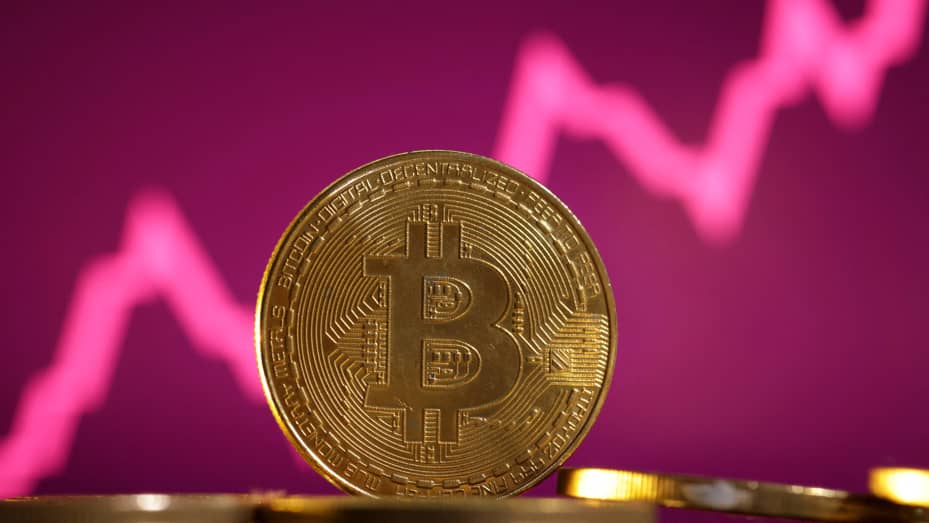Introduction:
In the fast-paced world of finance and technology, Bitcoin has emerged as a revolutionary digital asset, often hailed as “digital gold.” Since its inception in 2009, Bitcoin has experienced a meteoric rise, capturing the attention of investors, institutions, and the wider public. This article delves into the fundamental characteristics that underpin Bitcoin’s claim to being digital gold, exploring its historical context, unique features, and the broader implications it holds for the future of finance. Read on crypto news 2day.
- The Genesis of Bitcoin: Decentralization and Scarcity
Bitcoin’s journey began with the publication of the famous whitepaper by the pseudonymous Satoshi Nakamoto in 2008. Nakamoto introduced the world to a peer-to-peer electronic cash system, leveraging blockchain technology to create a decentralized digital currency. This departure from traditional financial systems marked the birth of Bitcoin and its underlying philosophy.
At the core of Bitcoin’s identity as digital gold is its limited supply. Capped at 21 million coins, Bitcoin mimics the scarcity inherent in precious metals like gold. This scarcity is not only a deliberate design choice but also a departure from fiat currencies that can be printed at will, providing a unique value proposition for those seeking a store of value in the digital realm.
- Digital Gold Analogy: A Store of Value in a Changing Landscape
The designation of Bitcoin as digital gold extends beyond scarcity to its function as a store of value. Gold has historically been a go-to asset for investors during times of economic uncertainty, serving as a hedge against inflation and currency devaluation. Bitcoin, with its decentralized nature, fixed supply, and ease of transfer, positions itself as a modern-day alternative to gold.
In an era marked by rapid technological advancements and shifting economic paradigms, Bitcoin offers a borderless and decentralized store of value. Its appeal lies in the fact that, like gold, it exists outside the traditional financial system, providing a level of autonomy and resilience that is increasingly valued in an uncertain world.
- Institutional Adoption: A Defining Moment
Bitcoin’s journey from the fringes of the financial world to mainstream acceptance has been punctuated by institutional adoption. Initially met with skepticism, Bitcoin has gradually gained recognition as a legitimate asset class. High-profile endorsements from companies like Tesla, Square, and institutional investors allocating portions of their portfolios to Bitcoin have provided a seismic shift in perception.
The institutional embrace of Bitcoin has not only lent credibility to the digital gold narrative but has also opened doors to a wider audience of investors. Traditional financial institutions, once hesitant to engage with cryptocurrencies, are now exploring ways to incorporate Bitcoin into their offerings, marking a transformative moment in the evolution of digital assets.
- Challenges and Skepticism: Navigating Regulatory Uncertainty
Despite its growing acceptance, Bitcoin faces challenges and skepticism, most notably in the realm of regulatory uncertainty. Governments around the world are grappling with how to categorize and regulate cryptocurrencies, creating an environment of ambiguity that can impact adoption and integration into mainstream financial systems.
The perception of Bitcoin as a volatile and speculative asset is another point of contention. Detractors argue that the extreme price fluctuations make it unsuitable as a stable store of value. While volatility has been a characteristic of Bitcoin throughout its history, proponents argue that it is a natural aspect of an emerging and maturing market.
- Technological Innovation: Beyond Digital Gold
While Bitcoin remains the preeminent cryptocurrency and a frontrunner in the digital gold narrative, the broader cryptocurrency landscape continues to witness technological innovation. Ethereum, for example, introduced smart contracts, enabling programmable decentralized applications (DApps) and expanding the utility of blockchain technology beyond a mere store of value.
This ongoing innovation within the cryptocurrency space suggests that while Bitcoin has laid the foundation, the future may see a diverse array of blockchain applications, each serving unique purposes in various industries. The technological frontier is continually expanding, with the potential to reshape not only finance but also other sectors.
Conclusion:
Bitcoin’s evolution from an abstract idea to a globally recognized digital asset with the moniker “digital gold” is a testament to its resilience and disruptive potential. As it cements its place in the financial landscape, the narrative of Bitcoin as a store of value continues to gain momentum. Whether viewed as a hedge against economic uncertainty, a speculative investment, or a technological breakthrough, Bitcoin’s impact on the financial world is undeniable.
As the journey unfolds, Bitcoin’s ascent to digital gold status is not merely a reflection of its historical significance but also a harbinger of the transformative changes underway in how we perceive and interact with value in the digital age. The road ahead promises to be dynamic, with Bitcoin leading the charge towards a future where decentralized, digital assets play an increasingly pivotal role in the global economy. See more btc news daily.


